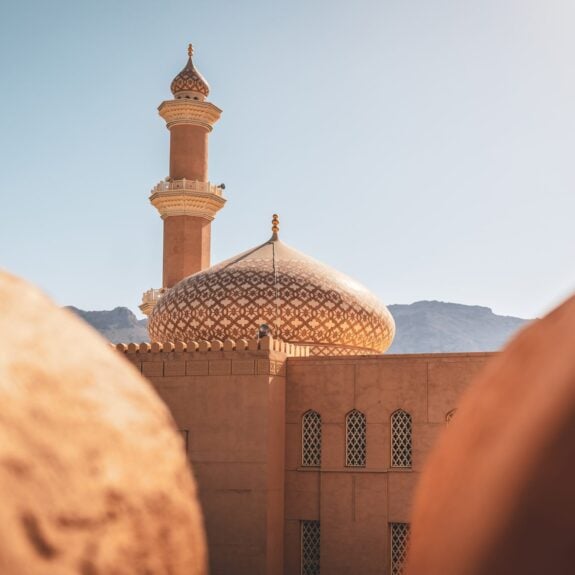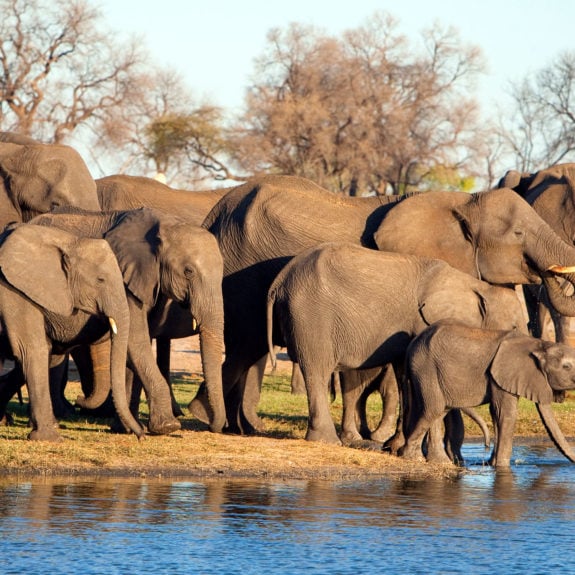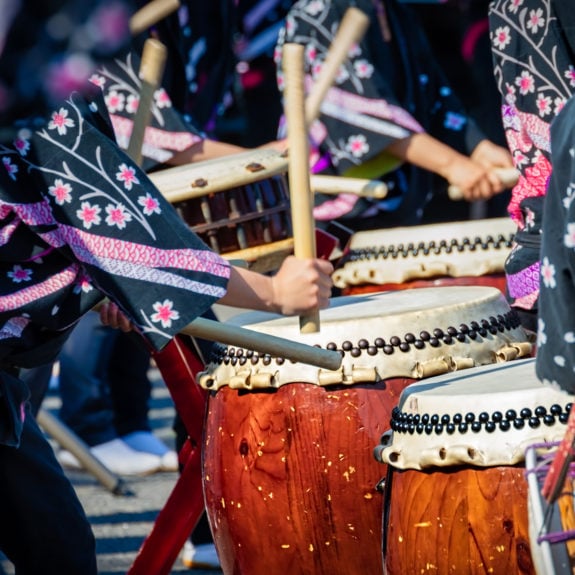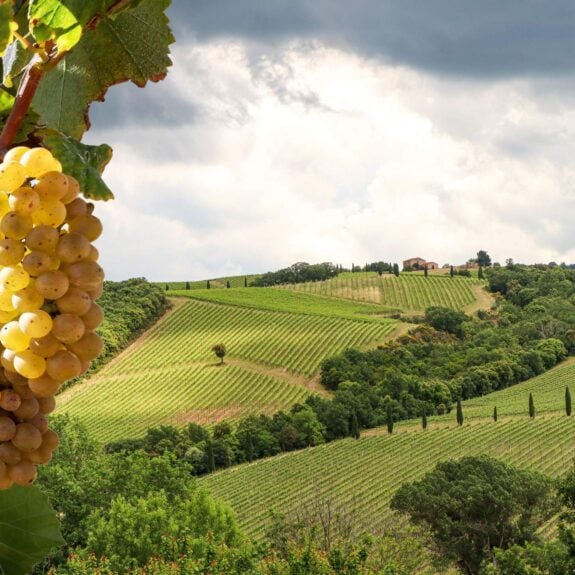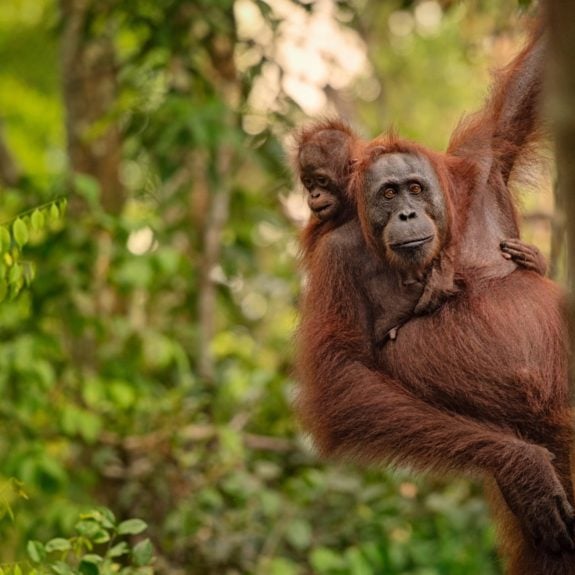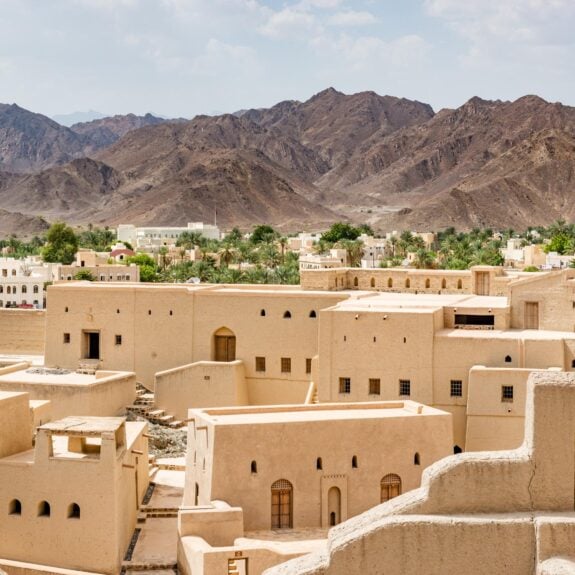Published on: October 10th, 2017
Last modified: March 8th, 2024
Urban Nilmander speaks to artist, Jason deCaires Taylor, about his newest underwater installation in the Canary Islands.
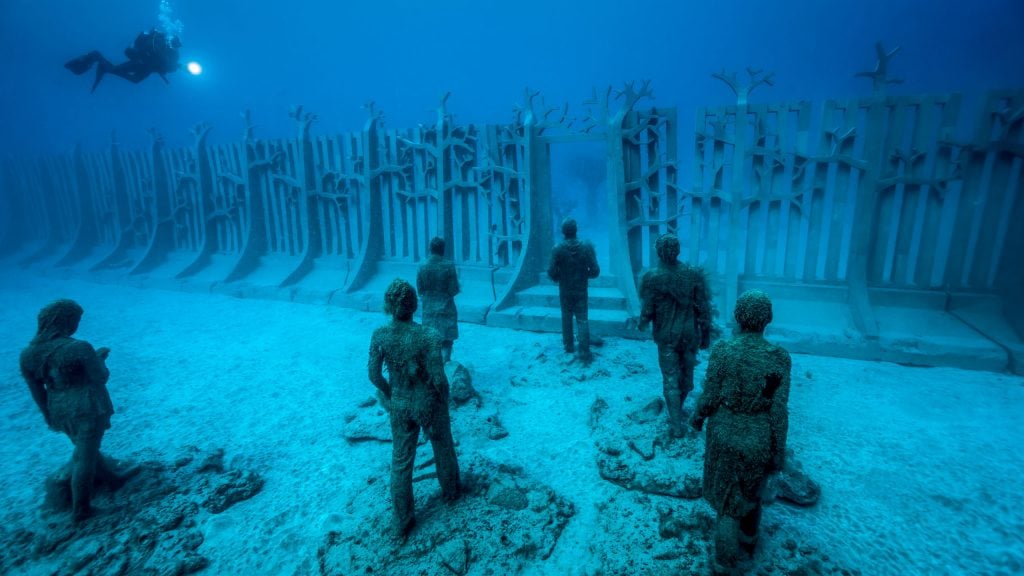
12 metres below sea level, two faceless people are taking a selfie. Behind them is a boat full of exhausted refugees. Everyone has already started to develop a thin layer of algae.
This is the Museo Atlántico, an underwater museum of 300 statues, that the artist, photographer, diver and environmentalist, Jason deCaires Taylor, has spent over a year creating off the Canary Islands.
Underwater art
The project in Bahía de Las Coloradas, on the volcanic island of Lanzarote, started a few years ago. Taylor was invited to the island by the regional government and a private art collector living in Lanzarote. Their ambition was to create Europe’s and the Atlantic’s first underwater museum.
Taylor has previously created similar museums in Mexico, Grenada and the Bahamas, plus a river installation in London’s Thames. For a long time, he was a diving instructor in the Caribbean, alongside working as a sculptor. “I wanted to combine my artistic creations with the environment I loved. I sold my company and managed to raise enough money to create statues in the ocean outside Grenada in the Caribbean,” Taylor tells me.
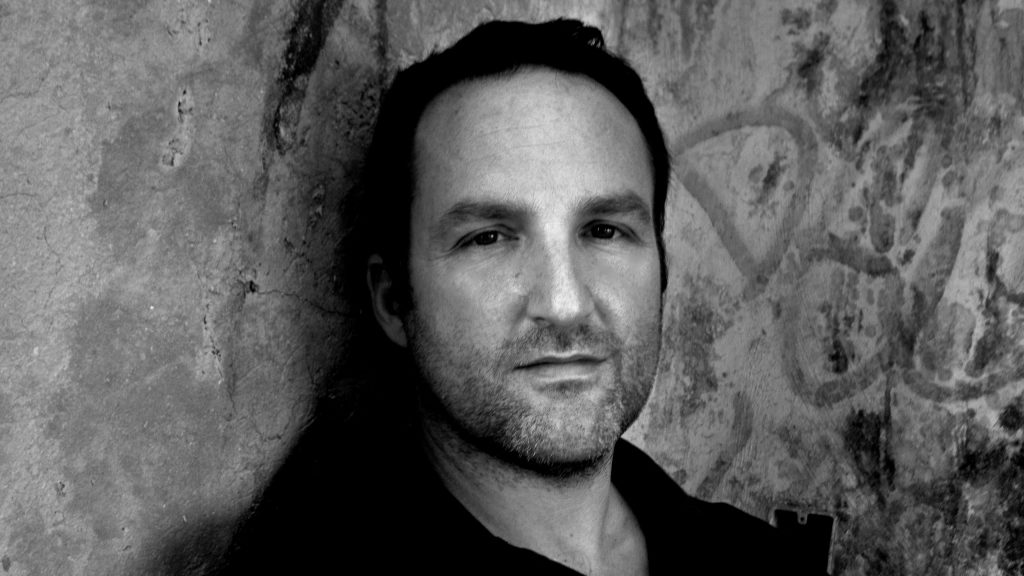
A British artist, with an English father and a Guyanese mother, Taylor’s photographs and films have received many awards and have been exhibited in fine art galleries. He began his artistic career, before art school in London, with graffiti in England. He painted train cars, walls, industrial buildings and competed against the authorities and the police.
“I painted a wall or a train that disappeared from the scene or was washed by the authorities. And it works the same way with my statues. Once they are in place in the water, they will take their own paths and create something new,” he says with a laugh.
“Looking at art underwater is a completely different experience to seeing them on a white wall,” Taylor explains. “The light is constantly changing, the environment around them changes, sometimes the water is cloudy… It is also multidimensional – you see the work from many different angles.”

Taylor has a unique way of bringing together art and active environmental work. “Right now, we are in a very critical time for the oceans. The decisions we take in the next few years will have long-lasting effects. I hope I can convince people to understand how important the oceans are to our survival,” he says.
Political statements
The statues Taylor created for Museo Atlántico are clear statements about politics and modern society.
A faceless couple taking selfies; a large group of people with cameras in front of their eyes; others looking at their phones. “My hope is that we will question our way of living. I think you miss experiences if you have to capture them through the lens of a camera or a mobile,” Taylor says.
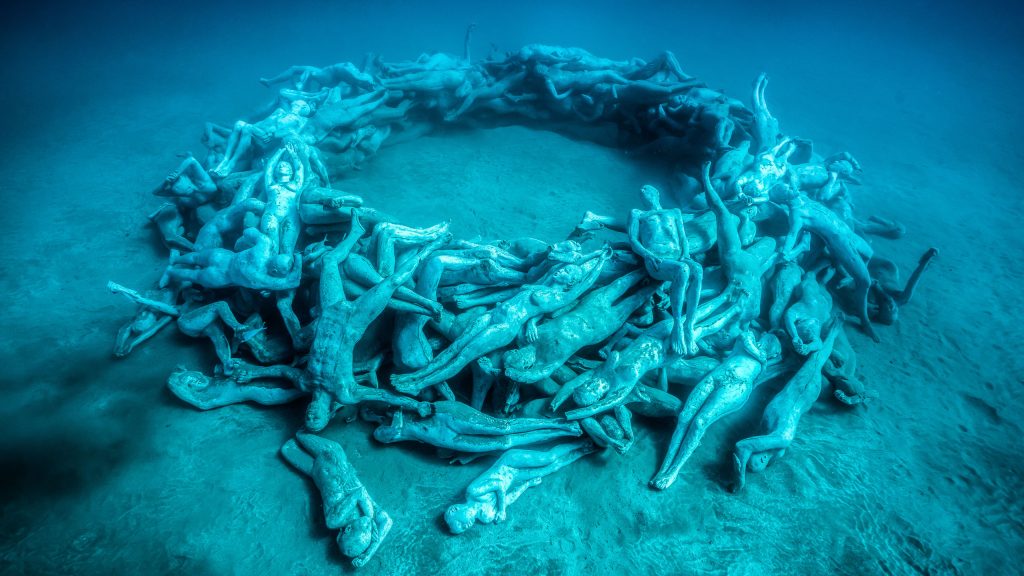
Locals from Lanzarote acted as models. “It is important that those who live on the island feel like owners and are involved in what I have created. But so much has already happened with the statues underwater that the models probably would not recognise themselves,” reveals Taylor.
The boat with 13 exhausted refugees tells the story of those who tried to cross the Mediterranean in small vessels. This sculpture is called The Raft of Lampedusa, paying homage to The Raft of the Medusa (Le Radeau de la Méduse), a world-famous painting by the French artist Théodore Géricault depicting the survivors of the wreck of a French ship, La Meduse, off the coast of Senegal in 1816.
In Taylor’s version, there is a person with his eyes shut on the bow of the boat. The model for this statue was 29-year-old Abdel Kader, who comes from Laayoune, the main city of Western Sahara. Kader survived the crossing from mainland Africa to the Canary Islands at age 12. En route, the boat’s engine broke down and he and everyone else floated for days without water or food. At last, a fishing boat picked up the refugees. He has now lived in Lanzarote for 17 years.
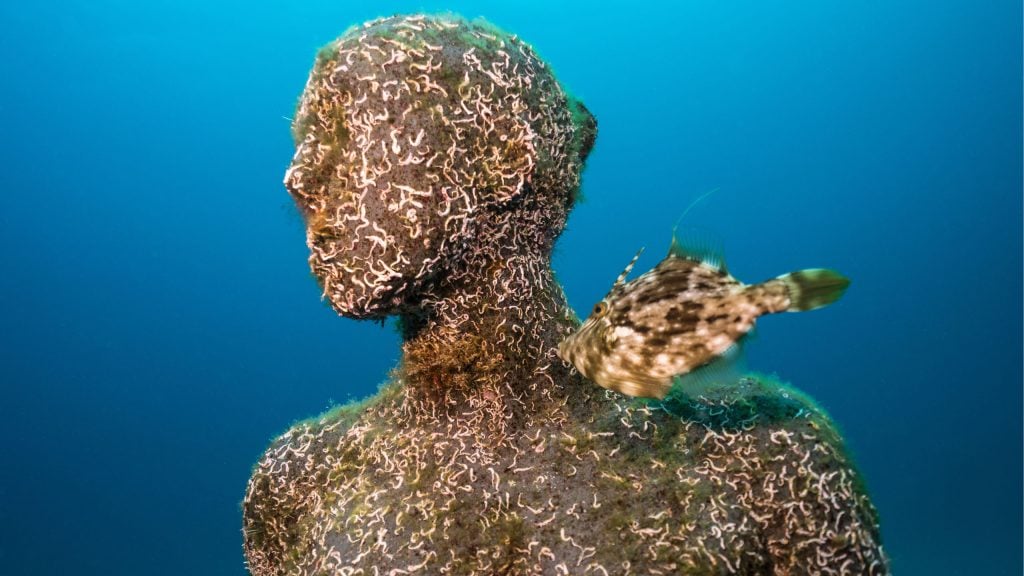
The ever-changing nature of the statues – eroded faces, holes in their chests, attached mussels or sea urchins, algae growing on them – will ultimately become an almost surrealist work of art. They will be a time-marker, perhaps completely outdated in 20 years. “It really is a museum. I have deliberately dressed them in clothes that are modern now, clothes that will quickly become dated. And maybe taking selfies everywhere has switched to something else,” Taylor says.
Art for the environment
Marine biologists helped Taylor create statues of a cement with neutral pH values that would not affect the environment. By making artificial reefs in the form of the sculptures, algae and corals take hold and fish can find shelter and food.
Recently, Taylor was back at the Museo Subacuático de Arte (MUSA), the underwater museum he created off Isla Mujeres in Mexico. “New organisms have attached themselves to my statues there and it’s very positive. But some of them have green algae, which means there has been overfishing in the area; overfishing leads to more algae,” he explains.
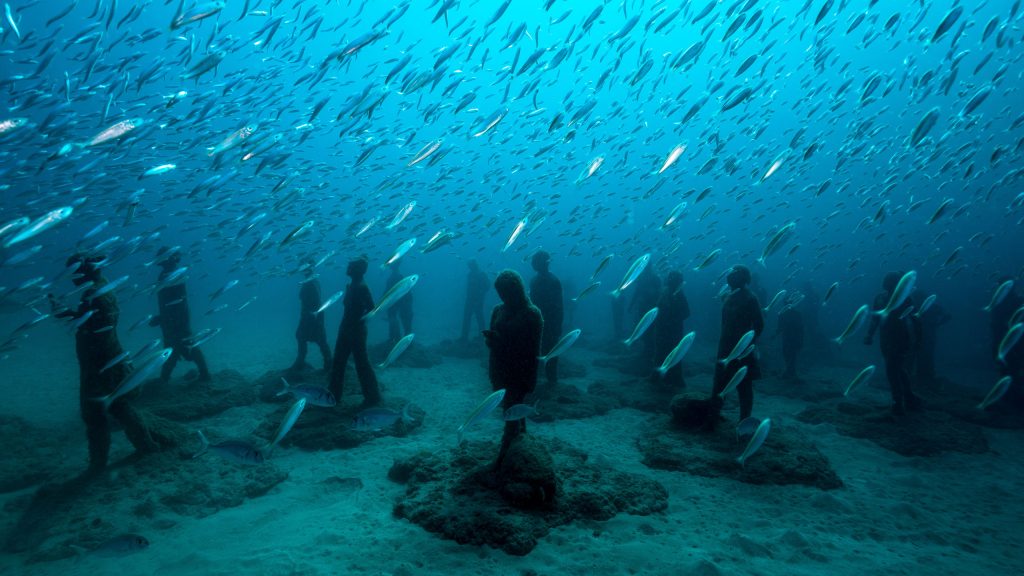
“We have already had an increase of 200% of organisms on the statues here [in Lanzarote] since we put down the first ones six months ago. This, in turn, has attracted thousands of sardines, sharks and octopuses,” said Taylor.
The authorities in Lanzarote are hoping for a boost in sustainable tourism, as visitors come to snorkel or dive down to the Museo Atlántico and see the fascinating world beneath the water’s surface.

“The water here has a much deeper blue colour than in the Caribbean and gives the statues a different hue and a different atmosphere. And the environment is changing very fast. The other day I found an octopus that had built a nest under the refugee boat,” says Taylor.
With the Museo Atlántico having opened in January this year, Taylor is already working on new plans for more underwater museums. “Nothing is signed, so I cannot tell you more right now, but I am currently in negotiations to do something similar in Scandinavia and the Mediterranean.”
Watch this space.
https://www.youtube.com/watch?v=-fpDst41xIk&feature=youtu.be
